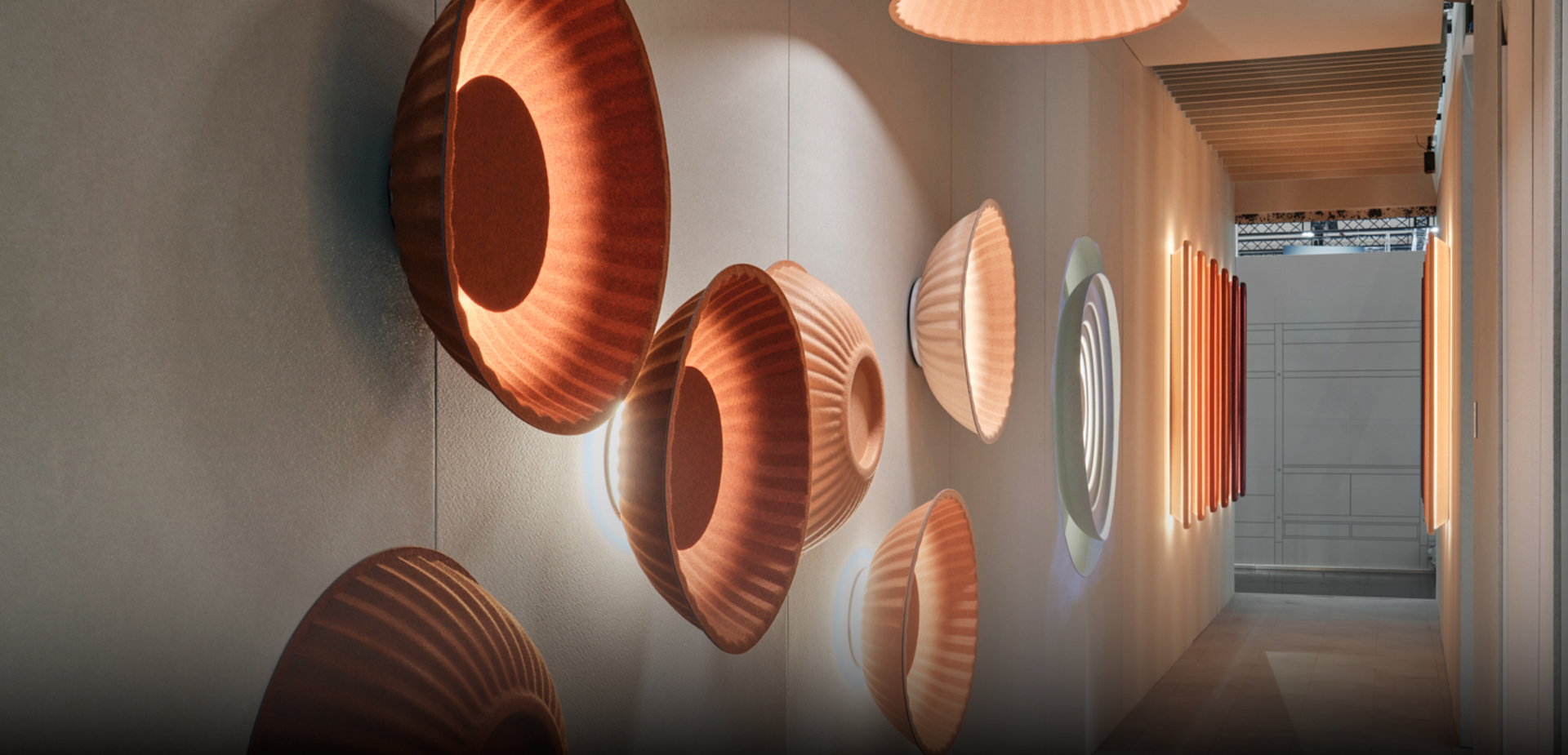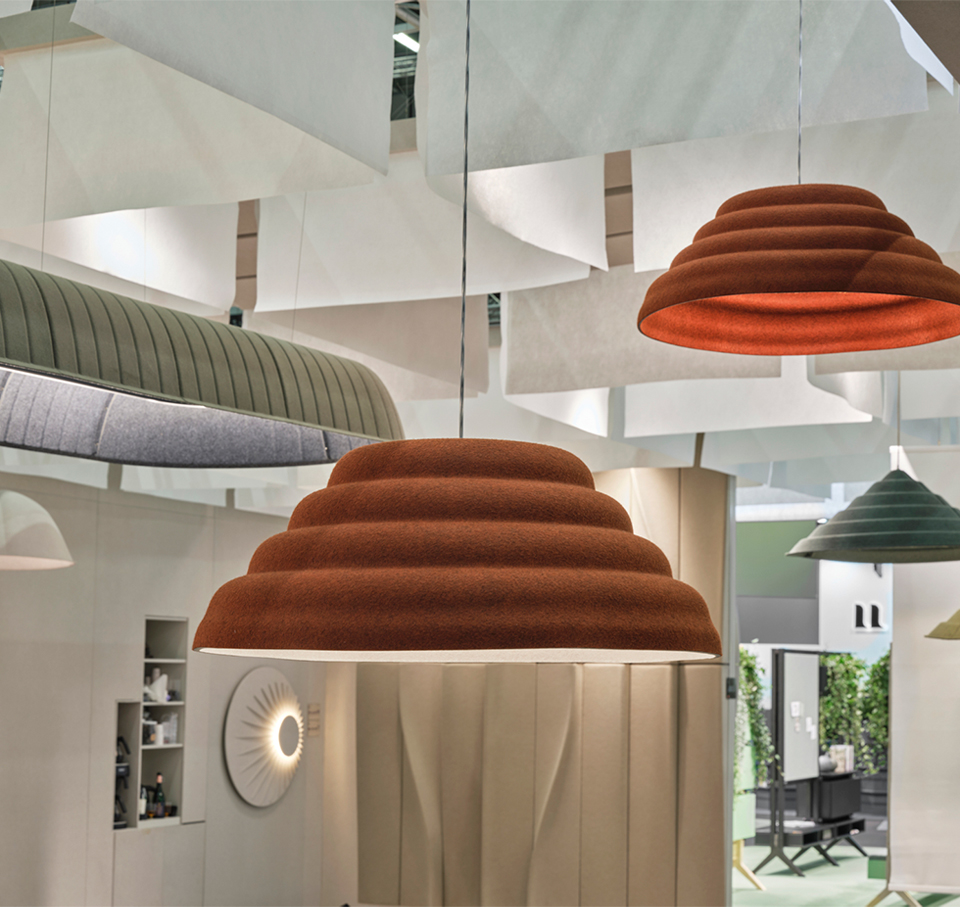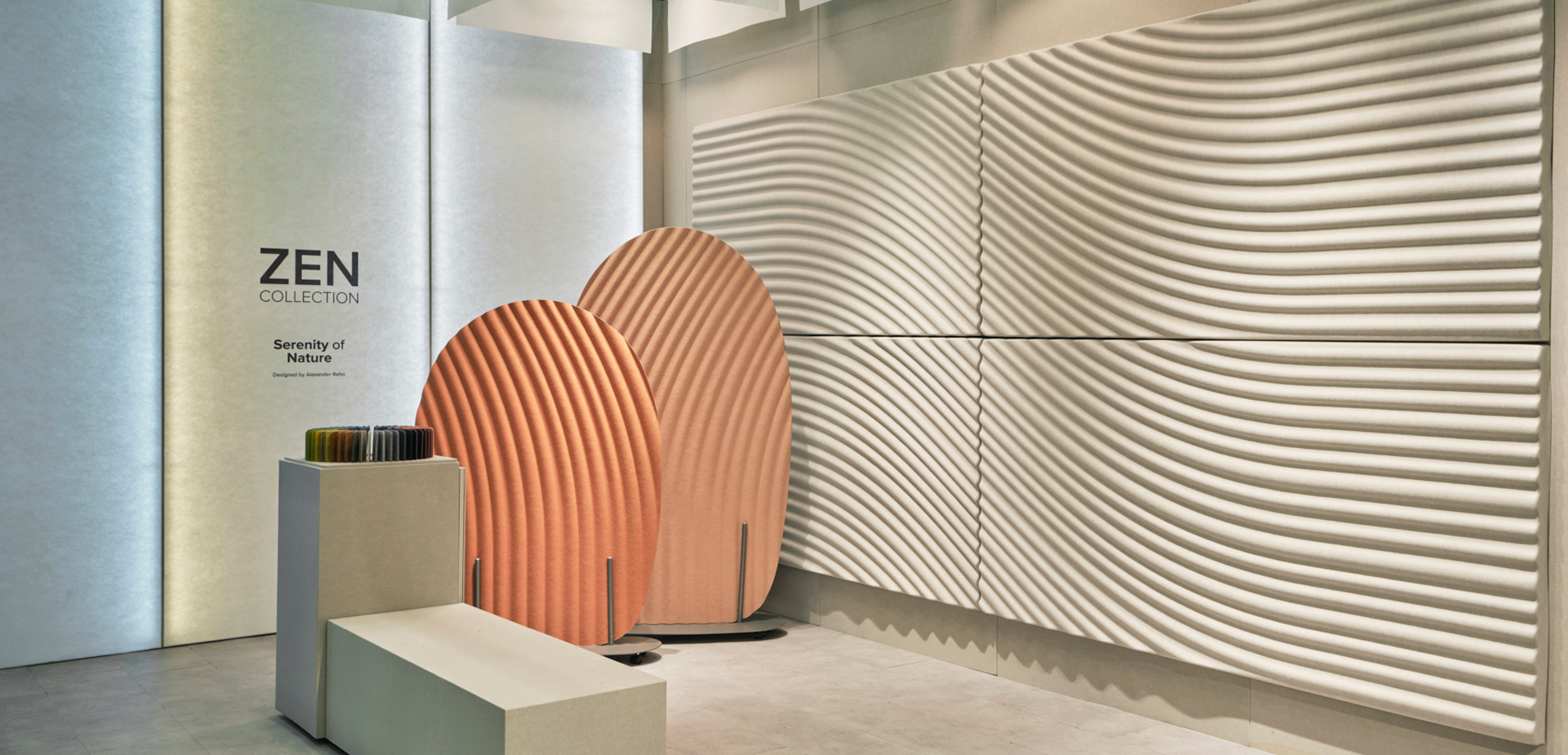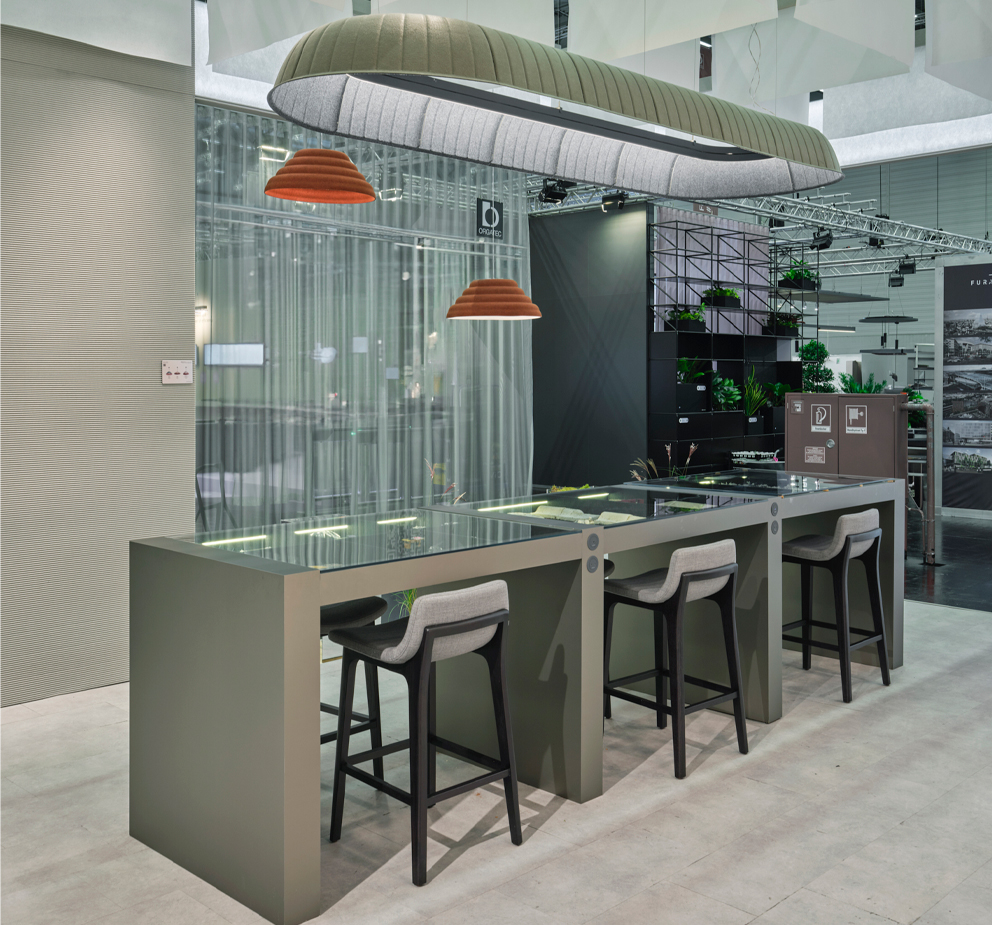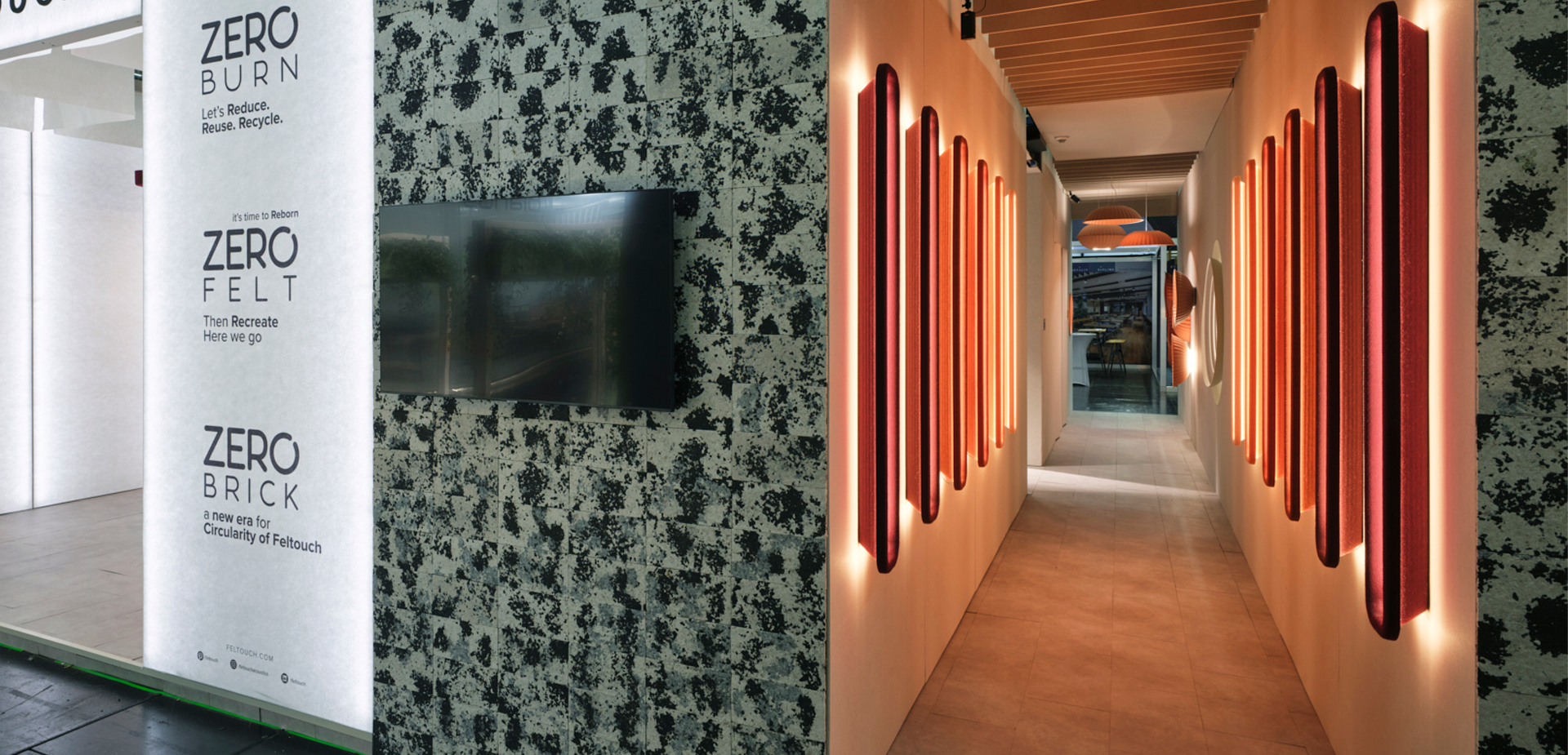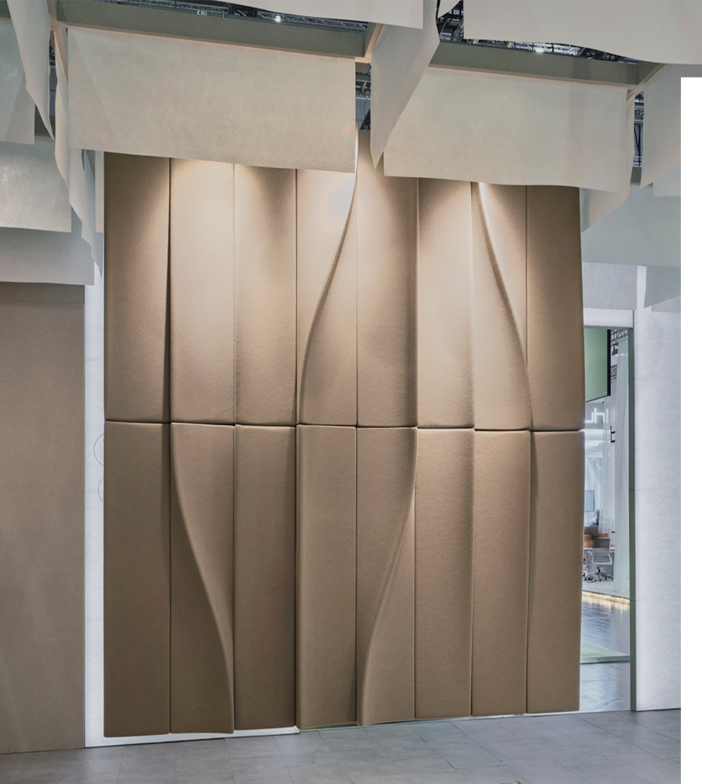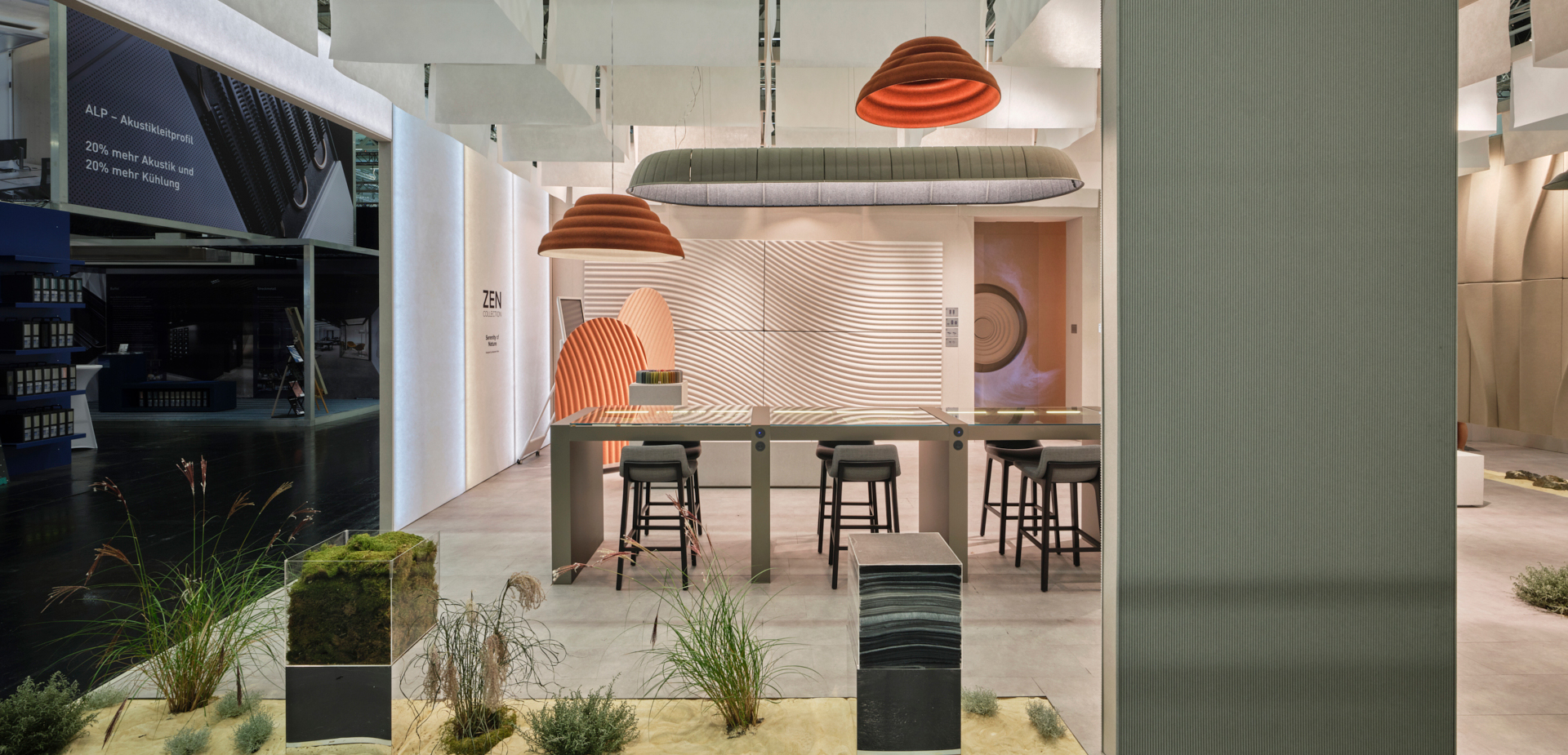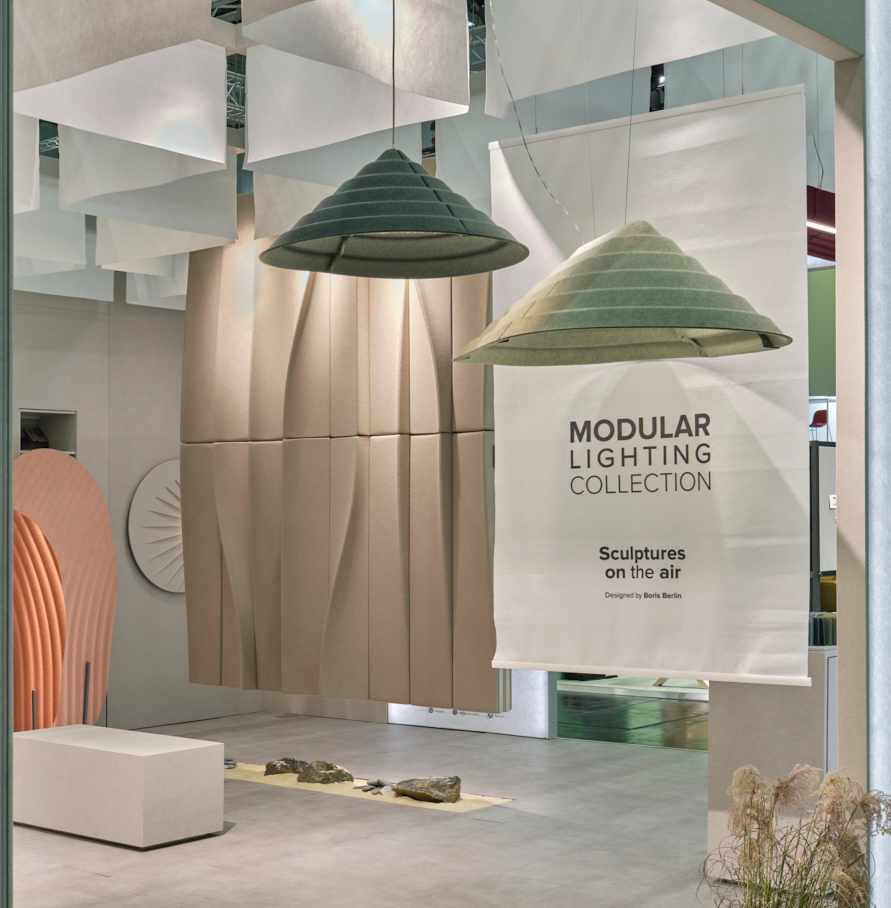-
Sound absorption management has significantly evolved, leading to innovative acoustic baffles and panels. Today, the gap between exceptional acoustics and stunning aesthetics is closing. Advancements in materials and design allow architects and property owners to create spaces that balance auditory satisfaction with visual appeal.
This exploration will cover the principles of acoustic treatments, available materials, and methods for harmoniously integrating these elements into various environments.
-
-
UNDERSTANDING SOUND ABSORPTION FUNDAMENTALS
Sound absorption reduces sound energy as it travels through materials, enhancing acoustic quality in studios and auditoriums. The absorption coefficient (0 to 1) indicates how well a material absorbs sound, with foam, fiberglass, and mineral wool being effective materials.
Absorption is frequency-dependent, requiring thicker materials for low frequencies and a broader range for high frequencies. Sound absorption differs from soundproofing, which prevents sound transfer between spaces; both are crucial in acoustic design.
THE EVOLUTION OF ACOUSTIC DESIGN
The evolution of acoustic design showcases humanity’s understanding of sound, from ancient amphitheaters to modern concert halls. Early architects used intuition to enhance acoustics, while the medieval period focused on creating awe-inspiring reverberation in cathedrals. In the 19th century, they brought scientific advancements, led by Wallace Clement Sabine, improving the acoustic design.
-
In the 20th century, materials like fiberglass transformed sound absorption, but treatments were often functional and hidden. A shift occurred in the late 20th century as designers embraced aesthetics and function in acoustic solutions, leading to visually appealing designs.
Modern acoustic solutions offer flexibility and integration into various spaces, driven by emerging technologies and sustainability principles. The following sections will explore acoustic baffles and panels, highlighting their innovative applications in creating beautiful, optimized environments.
-
-
EXPLORING ACOUSTIC BAFFLES
Acoustic baffles are innovative sound absorption tools that combine form and function to tackle modern acoustic challenges. Suspended vertically from ceilings, they effectively absorb sound waves and reduce reverberation in large, open spaces with high ceilings.
-
Modern baffles have evolved in design, offering various shapes and sizes that enhance interior aesthetics. From simple rectangles to intricate geometric forms, they provide visually compelling installations while maximizing sound absorption. Materials used in baffle construction greatly influence their acoustic performance and aesthetics. Typical core materials include:
- High-density fiberglass: Excellent sound absorption across a wide frequency range.
- Polyester fiber: Sustainable with good acoustic properties and durability.
- Mineral wool: Superior fire resistance and effective sound absorption.
- Recycled materials: Eco-friendly options that support sustainability.
-
-
-
These materials are typically wrapped in acoustically transparent fabrics, allowing various colors and textures to blend in or make a bold design statement. The application of acoustic baffles extends across a wide range of environments, each presenting unique challenges and opportunities:
- Corporate offices: In open-plan offices, baffles can create acoustic privacy while maintaining an open, collaborative atmosphere.
- Educational facilities: Classrooms and lecture halls benefit from improved speech intelligibility and reduced noise levels.
- Public spaces: Libraries, museums, and community centers can maintain a serene atmosphere even with high foot traffic.
- Performance venues: Theaters and auditoriums use baffles to fine-tune acoustics for optimal sound quality.
- Industrial settings: Factories and warehouses can significantly reduce noise levels, improving worker comfort and safety.
-
-
ACOUSTIC PANELS: VERSATILE SOLUTIONS FOR SOUND MANAGEMENT
Acoustic panels are essential for sound management, effectively controlling acoustics in various environments. Mounted on walls or ceilings, they help designers and acousticians manage sonic characteristics while enhancing visual appeal. These panels absorb sound waves, minimizing reflections and reverberations.
Today’s acoustic panels come in various styles, materials, and configurations, making them a key component of modern interior design. Their composition and construction largely determine the effectiveness of acoustic panels. Common materials used in acoustic panels include:
- Fiberglass: Excellent sound absorption across frequencies, widely used.
- Mineral wool: Superior fire resistance and effective sound absorption, especially for low to mid-range frequencies.
- Polyester fiber: Sustainable and made from recycled materials, offering good acoustic performance.
- Wood fiber: Natural aesthetics and sound absorption. Ideal for warm, organic spaces.
- Foam: Lightweight, easy to install, great for smaller areas or DIY projects.
-
These core materials are typically wrapped in acoustically transparent fabrics, allowing endless color, texture, and pattern possibilities. This versatility enables acoustic panels to seamlessly integrate with any design scheme, from minimalist modern to richly textured traditional styles. The design of acoustic panels has evolved significantly, with manufacturers offering an impressive range of options:
- Flat panels: The most common type, these can be customized with various fabric finishes and edge details.
- Sculpted panels: This design includes three-dimensional surfaces that enhance visual appeal and improve sound diffusion.
- Printed panels: Allow custom imagery or patterns to be printed directly onto the panel surface, turning them into functional art pieces.
- Modular systems: Offer flexibility in installation and design, allowing for easy reconfiguration as needs change.
- Curved panels: This material can be used to design distinctive architectural features while offering effective sound absorption.
-
-
Acoustic panels have a wide range of applications across various environments:
- Corporate environments: They enhance productivity in offices and meeting rooms by reducing noise and improving speech clarity.
- Educational facilities: Classrooms and libraries benefit from improved acoustics that support learning.
- Healthcare settings: Hospitals use them to create calm, private spaces for patient well-being.
- Hospitality venues: Restaurants and hotels manage noise levels to ensure comfortable guest experiences.
- Performance venues: Theaters and recording studios depend on acoustic panels for optimal sound quality.
-
-
In conclusion, modern acoustic design blends sound quality with visual aesthetics. Enhanced sound absorption improves the auditory experience while creating inspiring spaces. Architects can prioritize function and beauty by combining past knowledge with new materials and technologies. Innovations like baffles and panels showcase this creative integration. The challenge ahead is to continue innovating and crafting environments that engage both the ears and the eyes.
